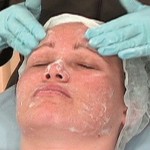Researching Chemical Peels
0Sacramento, CA (PRWEB) — Because a chemical peel is a particularly aggressive treatment, it is crucial to separate the facts from the myths before scheduling this procedure.
1. Always get a skin consultation first, in order to get an in-depth skin type analysis. This will make it easier to schedule the correct chemical peel. Dermatologists, plastic surgeons, licensed estheticians or registered nurses can perform chemical peels. When going to a day spa, there should be a waiver or peel consent form to sign prior to the peel, in order to protect both the patient and the day spa. Even when performed at a medical spa or in a doctor’s office, there is always a risk when trying something new on the skin. Also, make sure the professional is well-qualified to perform the treatment. Check educational and training background,  credentials and experience. It’s important to know how often he/she has performed the procedure. Also ask to see before and after pictures of patients with chemical peels. Ask the specialist for a complete list of instructions for before and after treatment. Also ask what type of support is offered.
credentials and experience. It’s important to know how often he/she has performed the procedure. Also ask to see before and after pictures of patients with chemical peels. Ask the specialist for a complete list of instructions for before and after treatment. Also ask what type of support is offered.
2. Chemical peels are not necessarily good for all skin types, especially for severely dry or hyper-sensitive skin. A peel can exacerbate symptoms like flaky, itchy and red skin. On the other hand, acneic skin and acne scars can be softened with chemical peels. Not only do the acids kill active blemishes on the surface, but they also help prevent more blemishes from forming.
3. Chemical peels are effective for treating severe acne. There are many ways to treat severe acne and acne scarring, but remember acne has four grades of its own, plus hormonal and genetic acne. A person with grade 1 acne has minor blemishes, milia and blackheads. At the other end of the spectrum, people with grade 4 acne usually have severe inflammation, and the cysts (blemishes) are deeper. People with severe cases of acne may need Accutane and should consult a dermatologist. The other grades of acne can be treated with such chemical peels as Jessner’s or Sal Ex peel.
4. There are actually many types of chemical peels, with various strengths and costs — from $75 to $600 or more. Each is highly effective in its own way. The most common are Alpha hydroxyl acids, Jessner’s Peel, Sal Ex 20%, the Oceanix Peel and the green Herbal Peel.
5. Always use pre-skin care products for at least two weeks before getting a chemical peel. Most pre-care products are designed to thin out the skin’s surface, allowing the peel to penetrate deeper.



